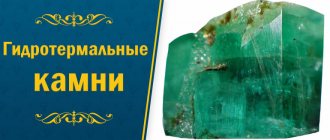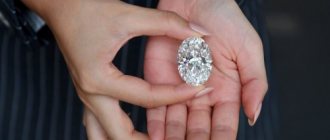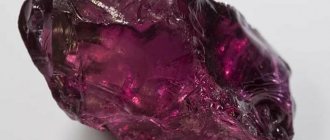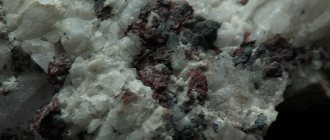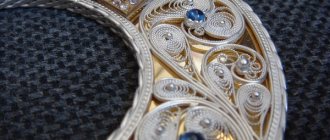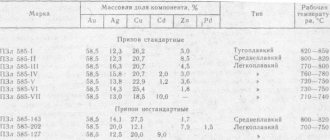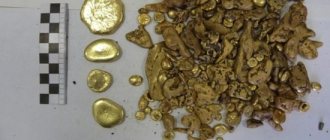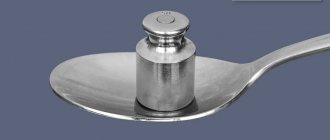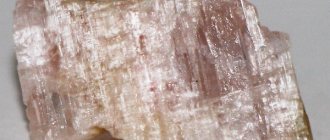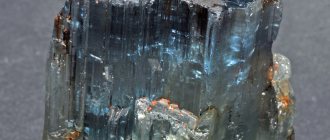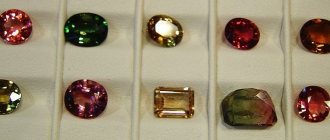Tourmaline is a beautiful mineral that is not often found in nature. Its uniqueness lies in the presence of a constant charge, which allows the stone to be actively used both in radio engineering and in medicine. The healing properties of tourmaline have long attracted unscrupulous people and stimulate the appearance of counterfeits of this stone on the market. And today there are already many more of them on the market than original samples. Where to buy tourmaline? How to distinguish a fake from a natural stone and what to do if you come across a non-original mineral - you can find the answer to all these questions in this material.
Where are counterfeits of tourmaline most often found?
Copies of the mineral are quite actively sold all over the world, since the stone is in great demand and is currently becoming more and more in demand. Most often, fake tourmaline can be found in the following places:
- When purchasing stones from another country with shipping;
- On the layouts of sellers of precious and semi-precious stones;
- When purchasing from individuals;
- From intermediaries who do not have direct contacts with tourmaline miners.
Counterfeits of tourmaline are sold in many countries; you can often buy it even near the deposit, since local traders take advantage of the inattention of customers and the fame of the digs.
An unscrupulous seller may have several natural stones in his arsenal and often takes advantage of this by first showing his potential client an original sample so that he can be convinced of the authenticity of the product, and then selling an artificial stone in its place. That is why experts advise being very careful when purchasing tourmaline, especially when it comes to exotic colors of the mineral.
Place of Birth
After the known deposits on the island that gave tourmaline to the world, the stone was discovered in other places:
- Brazil;
- Madagascar Island;
- Mozambique;
- Republic of South Africa;
- Canadian territories;
- China;
- Mountains of Afghanistan;
- America.
The Ural Mountains of Russian territory were quickly depleted. They have been used for many centuries. Now reserves of tourmaline have been found in Transbaikalia and the Kola Peninsula.
What are fake tourmalines?
Currently, there are several types of fake tourmaline:
- Synthetic stone obtained in laboratory conditions. It can have any color, weight and size, inclusions of air or small particles. Most similar to the original stone, it is often almost impossible to determine a fake by examining this mineral without a microscope. Even experts make mistakes. The production of such a stone in itself is quite expensive, which is why it is found on the shelves less often than the original mineral.
- Colored glass. It has lower hardness and almost always has a high level of transparency (which is not always typical for natural tourmaline), therefore it is often sold as a precious stone option. Also available in all colors of natural tourmaline, including mixed-color varieties.
- Plastic is the cheapest and lowest-quality example of a fake, found both in the direct sale of stones and in finished jewelry. It can imitate tourmaline quite well in color, but it gives itself away due to the presence of inclusions, unnatural shapes and low transparency.
- A natural stone similar to tourmaline. It may have similar strength characteristics, identical color and the classic elongated shape of tourmaline. This sample can be distinguished from a natural stone only by the absence of a constant electromagnetic field, which is characteristic only of tourmaline.
Currently, stones of all shades are counterfeited. Particularly popular are rare types of tourmaline, the originals of which are practically never found on the open market, as well as large samples that can be used in treatment or for industrial needs.
Origin story
- According to the views of the ancient Egyptians, tourmaline fell to Earth from heaven. Having met a bright rainbow on his way, he adopted its color, absorbing each of its colors.
- Archaeological excavations indicate that Byzantine craftsmen used tourmaline to make jewelry as early as the 12th century.
- In Russia, after the discovery of its own deposits (this happened in the 16th century), tourmaline was used to decorate church utensils, royal regalia, priestly vestments and icon frames.
- Tourmalines came to Europe only in the 18th century thanks to Dutch sailors who brought them to Amsterdam, which at that time was the world jewelry capital, from the island of Ceylon.
- European monarchs, who valued tourmalines no less than rubies and emeralds, presented them to the rulers of friendly powers.
What may cause doubts during the purchase of stones
The first thing you need to pay attention to when buying stones is the uniformity of color distribution throughout the crystal.
The buyer needs to remember that natural tourmaline, which has the same color intensity over the entire surface and does not give off shades when changing lighting, practically does not exist in nature. Such samples are very rare, therefore they are of great value in use and are practically never found on the open market. So a stone that has the same color over its entire area is most likely to be a fake. Particular attention should be paid to the color of polychrome stones. Remember - the color transition of natural crystal is very smooth. If you are offered a sample that has a sharp line between two shades, this is most likely a fake, and of rather low quality.
The second is the large size of the stone. It is known that such samples are widely used in radio electronics or in other industrial sectors, which is why they are extremely rarely found on the open market. The buyer should approach large yellow stones with a special degree of suspicion. This mineral is very rare and is practically never found in the public market weighing more than a carat.
The third aspect that makes the client think is the presence of large quantities of tourmaline of all colors. In nature, stones are found unevenly. Thus, samples of black, green and red colors are quite common, mined in many countries, so the seller can actually have them in abundance. This is especially true for black stone. However, yellow crystals, watermelon tourmaline, blue and transparent stones, as well as a mineral that has several colors or no color at all are rare in nature. Such samples are not always found within the same deposit, therefore the seller, especially if we are talking about a small supplier, cannot have them in abundance. If you see such a wide selection of stones, you may well have fakes in front of you - artificially grown crystals, or just colored glass.
The fourth fact, which is bound to raise a lot of questions from the buyer, is the low price of samples. Of course, not every tourmaline crystal can be classified as a precious stone - even among such a mineral they are rare. But this breed itself cannot be cheap even before processing. If the seller deliberately reduces the price of samples below the market price, this is a good reason for the buyer to think about the origin of the batch offered to him.
Another detail that you need to pay attention to is the presence of inclusions. Naturally occurring tourmaline has virtually no inclusions. But this is often the case with mineral analogs made by scammers from colored plastic.
If you notice at least one of the above factors when choosing a stone, you should pay more attention to the selection of samples and conduct household tests to determine the authenticity of the crystals.
Varieties
Tourmaline amazingly repeats numerous colors. Among the breed there are popular shades, rare and not of interest to masters.
Popular colors are:
- green;
- black;
- pink;
- blue.
Let's look at their features and magical abilities.
- Green mineral. Similar in appearance to emerald. One of the names is Brazilian Emerald. According to different deposits, green minerals have their own color saturation. Green samples affect the heart chakra. The heart becomes healthy, the person enjoys life, finds harmony, does not argue with himself, and enjoys what has been given to him from above.
- The pink mineral was loved by the monarchs of European countries. On their crown it was an obligatory component. The name of the pink rock is Rubellite. For a long time, tourmaline stones were mistaken for rubies, hence the similarity in names. The richness of pink comes from the presence and concentration of manganese. Such samples are mined in California, Russian Transbaikalia, and Madagascar. Large specimens are found in Brazilian deposits. Their length can reach up to half a meter.
- The black gem was obtained due to the concentration of iron in the mineral. Its scientific name is Sherl. This is the stone of sorcerers and witches. With his help they conducted their magic sessions. Esotericists are sure that black specimens protect against witchcraft and create a barrier from powerful magicians. Dark tourmaline frees you from jealousy, aggression and other negative qualities. It can relieve severe headaches and relieve mental suffering. Rotate the sherl counterclockwise over the place of pain: head, heart, limbs.
- The blue stone is known as Indigolite. This is a rare and expensive gem. The place of its extraction is added to the name, suggesting that beautiful stones be classified as follows: Oriental, Brazilian, Siberian. The standard solution is clear blue tourmaline. The crystal has the shape of a column. Inside the prism, even shading is visible, enhancing the beauty of the blue glow. If an admixture of varying contents (2–3 valence) of iron is added to indigo, indigolite begins to cast green. Jewelers have learned to create such tourmalines on their own. They expose indigolites to thermal effects. Blue (rich sea) gem is recommended for those who value peace, quiet, homeliness and comfort. The sea-colored mineral strengthens marriage and enhances love.
Fake tourmaline - how to spot a fake
Experts note that it is quite difficult to distinguish natural tourmaline from artificial one by eye for a person who does not have experience in this matter.
There are only a few tips that allow you to determine the authenticity of a stone in everyday conditions, and then only conditionally. The first thing you need to do in order to find out whether this is a real stone or a fake tourmaline is to try to scratch the crystal. Samples of this mineral are very hard, and it is more difficult to leave a mark on it than on glass or other material.
Second step: tourmaline needs to be heated a little. This effect activates the constant field of the mineral. After you heat the sample, bring small pieces of paper or cigarette ash to it; if the tourmaline is electrified, it will begin to attract paper or ash, this means the stone is genuine.
Attention: You can use your own breath or friction to heat the stone, but it is strictly forbidden to hold it over a lighter. Uneven impact on the crystal can lead to negative consequences, including the appearance of cracks in the stone.
Many of the above methods are considered controversial by both buyers and sellers. If, after using all possible verification options, you were still unable to clarify the authenticity of the stone, you need to move on to evaluating it in the laboratory.
Working with tourmaline in the laboratory
If it is not possible for a specialist to evaluate the quality of the crystal, you can do some experiments on it yourself.
If possible, the stone should be examined under a microscope or through a strong magnifying glass. A crystal produced in a laboratory will have numerous air inclusions. In nature, this phenomenon can also occur, but it will be a rare exception for tourmaline samples rather than the rule. The same can be said about the presence of white stripes in the stone, reflecting the sequence of crystal growth. A specimen grown in a natural environment should not have them. The presence of both stripes and air bubbles on the stone indicates that this is a fake.
When working with stone in laboratory conditions, it must be examined in the dark, as well as under incandescent light. Some samples of the mineral, for example, red tourmaline, have weak luminescence abilities, which would not be typical for a fake. In addition, it is known that this mineral loses its beauty in artificial light. If the sample looks as impressive under a light bulb as it does under daylight, it is quite possible that you are holding ordinary colored glass or a completely different mineral in your hands.
More complex tests can have a negative impact on the stone itself, even to the point of destruction, so there is no need to resort to them without prior preparation. The data obtained by the above methods is enough to doubt the origin of the purchase. If you have any doubts about the authenticity of tourmaline, you should immediately contact experts, especially if we are talking about purchasing a large batch of materials for treatment.
Magical and healing properties
It has long been known that tourmaline stone has magical properties. To this day, the gem is used to protect against evil spirits. It helps to reveal deception, drive out the bad thoughts of others, and neutralize envy.
In India, the stone is usually called masculine. It is believed that it makes a person more determined and purposeful. In addition, the gem has a beneficial effect on potency.
Interesting! In temples, tourmaline is used to decorate religious objects. It is used to trim the clothing of clergy.
This stone should be used by creative people. It helps to show talents and attract inspiration. The mineral is suitable for people who cannot decide on their field of activity. Using tourmaline is an easy way to achieve good luck. With the help of this stone you can achieve harmony with yourself and the world.
A tourmaline ring has magical properties.
The magical characteristics of the stone are revealed to a greater extent in gold pendants and rings. A ring with a pink or red stone will help a woman improve her personal life.
If tourmaline is used, its properties are too pronounced. The strong energy of the stone can cause harm to the psyche. Therefore, you need to wear the gem in doses. To ensure that the magical effect does not decrease, the stone must be charged in the sun. Excess energy and negativity should be washed off with cold water.
Historical descriptions say that since ancient times, healers have used the healing properties of tourmaline. Amulets with this stone protected against diseases and maintained health. Today, the gem is also actively used by lithotherapists for medicinal purposes.
The stone is characterized by various properties. It has a beneficial effect on human health. The gem is distinguished by its ability to emit infrared radiation. It helps restore cell function.
Pink tourmaline helps with skin and lung diseases.
The mineral is often crushed and used as a filler for belts. Such products need to be applied to sore joints and back. This helps to achieve a pronounced warming effect. In addition, the mineral has a beneficial effect on the synthesis of osteoblasts, which produce intercellular fluid.
The healing properties of the mineral also lie in the ionization of air. Saturation of the air with negative ions accelerates recovery from illness, if there are no contraindications. Tourmaline also helps achieve the following goals:
- normalize appetite and improve digestive functions;
- strengthen the heart and blood vessels;
- normalize blood pressure;
- increase immunity;
- normalize metabolism;
- restore the functioning of the nervous system;
- improve vision.
It is worth noting that the properties of crystals are largely determined by their color. Thus, green tourmaline helps eliminate cardiovascular pathologies. Black crystals cope with pain and stress.
Pink gem is used for skin and lung diseases. Watermelon stone helps strengthen the nervous system.
At the same time, tourmaline also has many contraindications. If soft tissues are damaged, you should postpone the use of the gem for a day. Crystals should not be used if there is fever or bleeding. The use of minerals is prohibited if you have thyroid disease, have a pacemaker, or develop allergies. Also, the gem is not suitable for pregnant and lactating women.
Green tourmaline is suitable for Aries, Libra and Leo.
What to do if you suspect fake tourmaline
The first thing to do if you have doubts about the seller’s integrity is to find out from him the source of the stones.
The buyer is recommended to study the list of popular deposits in advance, clarify what kind of stones are mined there and whether they have any characteristic features. If the seller cannot guide you on the origin of the mineral and does not provide information about the source of its purchase, most likely you were sold a fake. In addition, after receiving the first data about the stone, the consumer can contact a specialist for an examination. Studying the stone will take some time, most often it takes several days. However, this move makes it possible to obtain a detailed analysis of the purchased mineral and make sure that this is an original mineral, or to identify a fake.
Having the examination data in hand, it is easier to demand compensation from the seller for low-quality goods or to prove your case in court.
Compatibility with zodiac signs
Tourmaline suits Taurus and Virgo the worst. Others can choose a mineral based on its color:
- Scorpio – perfect compatibility, you can wear any stone;
- Cancer, Gemini, Pisces – multi-colored minerals;
- Aries, Leo, Libra – pink, red, green;
- Capricorn – pink;
- Sagittarius, Aquarius - blue.
But I still recommend that you focus on the properties of tourmaline. If among them there is something you need, try wearing jewelry with this mineral, regardless of your zodiac sign.
What to do with a fake stone
Fake tourmaline is always a bad purchase.
Such a stone cannot be used in production, since it does not have the unique characteristic of real tourmaline - a constant electric field. It is also useless for medical purposes, since it also does not provide any negative ions for treatment. Its properties as a mineral for the production of jewelry are also questionable. The sample is unlikely to be included in the category of precious stones and, at best, will pass for material for the production of costume jewelry. However, the use of a stone that does not even have precious status is unlikely to interest buyers who have paid a lot of money for the shipment. Therefore, those who have identified the seller’s dishonesty by determining at home that the stone is fake should contact the seller and return the product back. Remember, the law is on your side in this case. As a last resort, you can report an act of fraud to law enforcement agencies.
In order to avoid falling into a similar situation, you need to be as careful as possible when choosing stones and demand from sellers documents for the proposed product, at least papers indicating the purchase of a batch from a deposit or from a large mineral miner. And, of course, when choosing a seller, be sure to find out his status on the market, study reviews of his products, work with trusted people, in this case you can’t go wrong.
Storing and caring for tourmaline products
Tourmaline is a durable mineral, and it takes a lot of effort to damage jewelry containing it. On the contrary, when placed next to softer gems, tourmaline scratches their surface, so it is better to store each item in a separate case. If dirty, use warm water and soap and a soft flannel or microfiber. Be careful not to come into contact with mercury as it will react with any precious metals your gem may be set in.
Features of care
Jewelry with tourmaline is quite easy to care for. It is enough to wash them under warm running water once every couple of months. It is not recommended to use abrasives, steam or other aggressive methods for cleaning.
